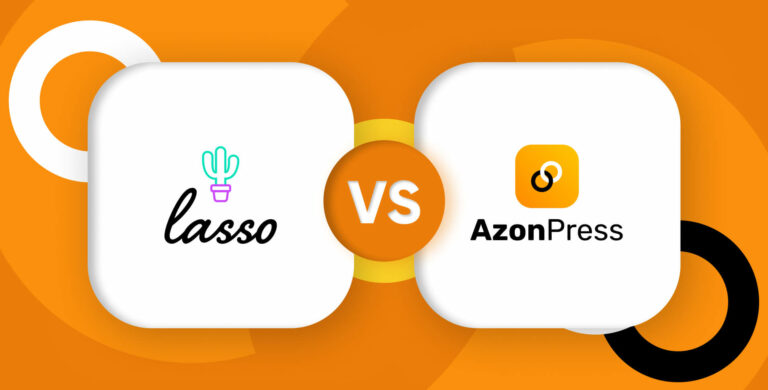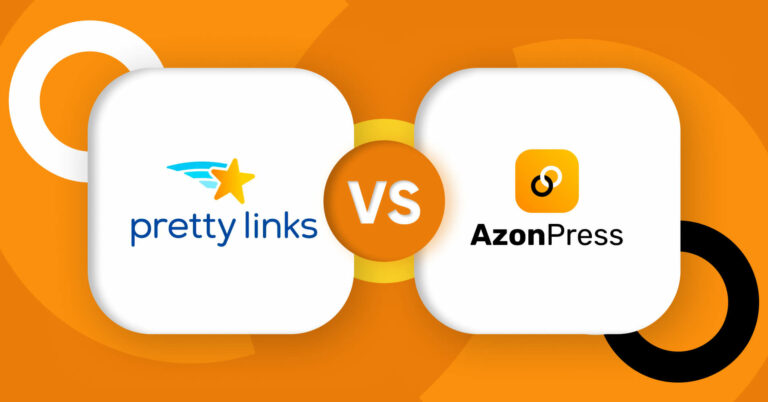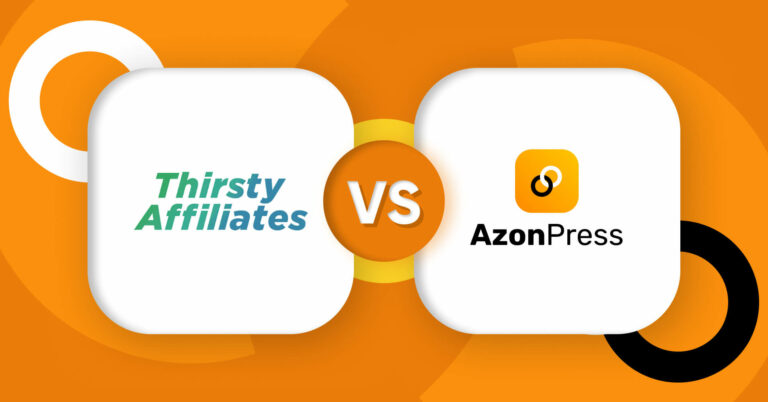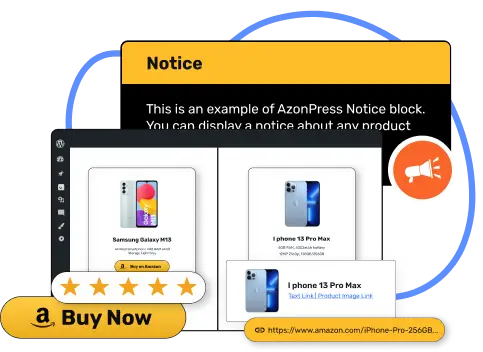
11 Metrics To Measure Affiliate Marketing Success
Popular Posts
Get access to our Exclusive Offers & Pro Tips
Takeaways:
To measure affiliate marketing, focus on metrics that reflect both engagement and conversion. Key indicators include click-through rate (CTR), conversion rate, average order value (AOV), earnings per click (EPC), and return on investment (ROI). Tracking these metrics allows you to assess the effectiveness of your affiliate program and identify areas for improvement.
Your affiliate marketing campaigns are either making you money or costing you money. There’s no middle ground.
Measuring affiliate marketing involves tracking various key performance indicators (KPIs) to assess how well your affiliate campaigns are working.
Most affiliates are flying blind, making decisions based on gut feelings rather than proper affiliate marketing analytics.
In this article, I’ve talked about 11 affiliate marketing metrics that you should track to measure affiliate marketing success.
The main difference between successful and unsuccessful affiliate marketing is smart affiliate marketing tracking strategies and systematic KPI affiliate marketing measurement.
You should know exactly which affiliate marketing metrics drive profits and which ones waste time. Then you should implement solid affiliate monitoring systems that reveal opportunities and minimize expensive affiliate marketing mistakes.
Here’s what I’ll cover in this article:
- Revenue-generating performance indicators through affiliate program monitoring
- Traffic quality measurements that matter for affiliate marketing results
- Customer value optimization techniques using affiliate marketing analytics
- Campaign profitability benchmarks for maximum affiliate marketing tracking efficiency
So, let’s dive right into it.
Why measure affiliate marketing metrics?
You can’t improve what you don’t measure. Period.
Affiliate marketing feels overwhelming because there are hundreds of metrics you could track. Most are useless distractions. The smart approach focuses on affiliate marketing KPI measurements that directly impact your bank account.
Think about it this way:
Would you rather have 10,000 visitors who never buy anything, or 100 visitors who each spend $50?
The answer reveals why tracking the right affiliate marketing metrics changes everything about your affiliate marketing results.
The following 11 measurements have one thing in common. They all connect to affiliate marketing ROI.
Moreover, some measure how you generate it, others show how to maximize it, and several help you protect it through systematic affiliate policy monitoring.
1. Click-Through Rate (CTR)
Click-through rate shows how many people actually click your affiliate links compared to how many see them. Furthermore, this critical affiliate marketing metric reveals whether your content grabs attention or gets ignored in your affiliate marketing tracking dashboard.
The formula:
(Total Clicks ÷ Total Impressions) × 100
For example,
Your product listing gets 5,000 views and generates 150 clicks. That’s a 3% CTR (150 ÷ 5,000 × 100). Consequently, this becomes a baseline for your affiliate monitoring system.
Why CTR matters:
Low CTR means your content isn’t compelling enough to motivate action. High CTR indicates strong audience engagement and strategic link placement. Moreover, consistent affiliate marketing tracking of CTR helps optimize your affiliate marketing analytics for better performance.
Most affiliates see CTR between 1-3%. Anything above 5% puts you in the top tier of affiliate marketing results.
How to improve your CTR:
- Write headlines that create curiosity gaps
- Place links after solving specific problems
- Use action words that create urgency
- Test different link colors and styles through affiliate program monitoring
- Add scarcity elements to your offers
2. Conversion Rate
Conversion rate measures how many clicks turn into actual sales. This affiliate marketing KPI separates successful affiliates from struggling ones. Furthermore, it’s the most critical component of your affiliate marketing analytics system.
The formula:
(Total conversion ÷ Total clicks) × 100
For example,
500 people click your link, and 25 of them make purchases. Your conversion rate is 5% (25 ÷ 500 × 100). Notably, this data becomes essential for your affiliate monitoring dashboard.
The reality check:
Average affiliate conversion rates hover around 1-3%. Anything above 5% indicates a strong product-audience fit and excellent affiliate marketing results.
What kills conversions:
When you promote products that your audience doesn’t like, your conversion takes a hit. Also, sending traffic to poorly designed pages can be a major issue.
Another problem can be the mismatch between your content and the offer. When you offer something to your potential buyers, make sure the offer matches their expectations.
Another huge conversion killer is your technical issues. Don’t keep your audiences hanging on a sloppy checkout process.
How to improve your conversion rate:
- Research your audience’s actual pain points
- Test different products with the same traffic through affiliate program monitoring
- Create bridge content that warms up cold traffic
- Monitor where people drop off in the buying process using affiliate marketing analytics
3. Earnings Per Click (EPC)
EPC reveals how much money each click generates on average. This affiliate marketing metric helps you identify which campaigns actually contribute to your affiliate marketing ROI.
The formula:
(Total commissions earned ÷ Total clicks) × 100
For example,
You earn $400 in commissions from 200 clicks. Your EPC is $2.00 ($400 ÷ 200). Moreover, tracking this through your affiliate monitoring system reveals campaign profitability trends.
Industry benchmarks:
Good EPC varies by niche, but here’s what to expect from your affiliate marketing tracking:
- High-ticket items: $5-50+ per click
- Mid-range products: $1-5 per click
- Low-ticket items: $0.10-1 per click
The EPC sweet spot:
When your EPC exceeds your cost per click, you’re profitable. When it doesn’t, you’re losing money. Consequently, this KPI affiliate marketing measurement becomes crucial for budget allocation decisions.
How to improve your EPC:
- Focus on higher-commission products
- Create email sequences that nurture clicks over time through affiliate marketing analytics
- Build comparison content that showcases premium options
- Target keywords with commercial intent
4. Average Order Value (AOV)
AOV shows how much customers typically spend when they buy through your links. Higher AOV means more commissions per conversion. Furthermore, this affiliate marketing KPI directly impacts your overall affiliate marketing results.
The formula:
(Total revenue ÷ Total number of orders)
For example,
Your affiliate links generate $2,000 from 50 orders. AOV equals $40 ($2,000 ÷ 50). Additionally, tracking this through affiliate program monitoring helps identify optimization opportunities.
Doubling your AOV doubles your commissions without needing more traffic. It’s often easier than doubling your conversion rate. Moreover, consistent affiliate monitoring of AOV reveals seasonal patterns and product preferences.
How to increase your AOV:
- Create “complete system” bundle recommendations
- Write comparison posts favoring premium options
- Highlight limited-time upgrade offers through affiliate policy monitoring
- Show the total cost of cheaper alternatives over time
5. Customer Lifetime Value (LTV)
LTV estimates how much revenue a customer generates over their entire relationship with a brand. This affiliate marketing metric reveals which traffic sources provide lasting value to your affiliate marketing ROI.
Tracking approach:
Monitor repeat purchases, subscription renewals, and long-term engagement patterns through comprehensive affiliate marketing analytics platforms.
The LTV advantage:
Customers with high LTV justify higher acquisition costs and more aggressive marketing spend. Consequently, this becomes a key component of your affiliate marketing tracking strategy.
How to increase your LTV:
- Partner with brands offering subscription products
- Promote consumable items that require refills
- Focus on software and services with upgrade paths
- Build email lists for ongoing relationship nurturing through affiliate monitoring systems
6. Return on Investment (ROI)
Affiliate marketing ROI measures whether your campaigns actually make money after all expenses. This metric cuts through vanity numbers to show real profitability. Furthermore, it’s the ultimate KPI affiliate marketing professionals use to evaluate success.
The formula:
((Total revenue – Total Costs) ÷ Total Costs) × 100
For example, you spend $1,000 on ads and earn $3,000 in commissions. ROI is 200% (($3,000 – $1,000) ÷ $1,000 × 100). Moreover, tracking this through affiliate marketing analytics provides clear profitability insights.
ROI reality check:
Positive affiliate marketing ROI means profit. Negative ROI means you’re paying for the privilege of losing money. Notably, consistent affiliate program monitoring helps identify ROI trends before they become problems.
How to increase your ROI:
- Cut campaigns with consistently negative affiliate marketing ROI
- Reinvest profits from high-ROI campaigns through affiliate marketing tracking data
- Negotiate better commission rates based on volume
- Automate repetitive tasks to reduce time costs
Get access to our exclusive offers and pro tips!
7. Traffic Source Performance
Different traffic sources produce different affiliate marketing results. This affiliate marketing metric reveals which channels generate your most valuable visitors through comprehensive affiliate monitoring.
What to measure:
Conversion rates, AOV, and LTV by traffic source using affiliate marketing analytics (organic search, social media, email, paid ads).
Traffic hierarchy:
Not all traffic is equal in terms of affiliate marketing KPI performance
- Email subscribers: Highest conversion rates
- Organic search: Best long-term value
- Social media: High volume, lower conversion
- Paid ads: Fast results, requires optimization
Traffic optimization strategy:
- Double down on your best-performing sources through affiliate marketing tracking
- Test new channels gradually using affiliate program monitoring
- Create source-specific content and offers
- Track the complete customer journey with affiliate marketing analytics
8. Seasonal Performance Patterns
Seasonal trends show when your audience is most likely to buy. Understanding these patterns through affiliate monitoring helps maximize revenue during peak periods. Furthermore, this affiliate marketing metric reveals optimal timing for campaign launches.
Pattern recognition:
Analyze monthly performance data over multiple years to identify buying cycles using affiliate marketing analytics.
Common seasonal opportunities:
- Black Friday/Cyber Monday for retail
- January for fitness and productivity products
- Back-to-school season for educational content
- Tax season for financial products
How to improve your seasonal strategy:
- Prepare content calendars around peak periods based on affiliate marketing tracking data
- Build email lists during slow seasons
- Test new products when competition is lower through affiliate program monitoring
- Save budget for high-conversion periods to maximize affiliate marketing ROI
9. Attribution Accuracy
Attribution measures how effectively you track conversions from click to commission through your affiliate marketing tracking system. Poor attribution means lost revenue and inaccurate affiliate marketing results.
The problem:
Customers often take multiple steps before buying. If your affiliate monitoring breaks, you lose credit for sales you generated. Consequently, this impacts your true affiliate marketing KPI measurements.
Attribution challenges:
- Cookie deletion by users
- Cross-device purchasing behavior
- Long consideration periods
- Technical affiliate marketing tracking failures
How to improve attribution:
- Use multiple tracking methods simultaneously in your affiliate marketing analytics
- Understand each affiliate program’s cookie duration through affiliate policy monitoring
- Implement first-party tracking when possible
- Monitor discrepancies between clicks and reported sales using affiliate program monitoring
10. Competitive Positioning
Competitive metrics show how your affiliate marketing results compare to other affiliates promoting similar products. Moreover, this affiliate marketing KPI helps identify market opportunities and performance benchmarks.
Key Indicators:
- Your ranking within affiliate programs through affiliate program monitoring
- Commission rate negotiations success
- Exclusive offer access
- Volume-based bonus qualification tracked via affiliate marketing analytics
How to research:
- Study top performers’ content strategies using affiliate monitoring tools
- Analyze their traffic sources and keywords
- Monitor their promotional calendar through affiliate marketing tracking
- Identify gaps in their coverage
How to improve your competitive positioning:
- Develop unique value propositions based on affiliate marketing metrics
- Focus on underserved audience segments identified through affiliate marketing analytics
- Create superior educational content
- Build stronger relationships with merchants via affiliate policy monitoring
11. Cost Per Acquisition (CPA)
CPA shows how much you spend to generate each new customer. Lower CPA means higher affiliate marketing ROI. Furthermore, this affiliate marketing KPI reveals campaign efficiency across different channels.
The formula:
(Total Marketing Cost ÷ Number of new customers)
For example, you spend $500 on ads and acquire 50 new customers. CPA is $10 ($500 ÷ 50). Additionally, tracking this through affiliate marketing tracking helps optimize budget allocation.
How to improve your CPA:
- Improve landing page conversion rates using affiliate marketing analytics
- Target higher-intent keywords
- Use retargeting to reduce waste
- Optimize ad creative and copy based on affiliate monitoring data
Bonus Tip: AzonPress WordPress affiliate marketing plugin
AzonPress is the best WordPress affiliate marketing plugin for affiliates who want to boost affiliate marketing clicks and conversions.
With customizable product display boxes, geo-targeting, auto product updates, and zero API dependency, it lets affiliate marketers showcase products and manage links, all from one intuitive dashboard.
Key features of AzonPress include:
- Customizable comparison tables
- Best-seller lists and product grids
- Zero API integration
- Customizable layouts
- Link management
- User-friendly interface
- Smart Gutenberg widgets
- Geotargeting
- Advanced reporting
- Geolocation-based redirection
- Shortcode support
- Responsive and mobile-friendly layouts
Wrap up
Most affiliates guess their way through campaigns and wonder why they fail. You now have the measurement framework that separates professionals from amateurs.
By tracking these metrics, your business can gain valuable insights into the performance of your affiliate marketing efforts and make data-driven decisions to optimize your programs and maximize returns.
Pick three metrics that align with your biggest challenges to measure affiliate marketing performance. Set up tracking systems this month. Review results next month. Optimize based on what you learn.
Read More: Top 27 Affiliate Marketing Books For Instant Success
Frequently asked questions
Here are answers to some frequently asked questions about measuring affiliate marketing:
Q. Why is tracking affiliate marketing metrics important?
Answer: Tracking metrics helps you identify what’s working and what’s not. It eliminates guesswork, improves decision-making, and ensures your campaigns generate profit.
Q. What are the most critical affiliate marketing metrics to monitor?
Answer: Focus on CTR, conversion rate, EPC, AOV, and ROI. These directly impact your bottom line and help evaluate the effectiveness of your traffic, content, and offers.
Q. How can I improve my affiliate conversion rate?
Answer: Promote products that match your audience’s needs, fix technical issues, and use bridge content to warm up cold traffic. Match the offer with the content contextually.
Q. What does Earnings Per Click (EPC) tell me?
Answer: EPC reveals how much revenue each click generates. It helps you identify profitable campaigns and decide where to focus your traffic and promotional efforts.
Q. How can I lower my Cost Per Acquisition (CPA)?
Answer: To reduce CPA, improve landing pages, retarget visitors, refine your ad copy, and focus on high-intent keywords to attract more qualified leads.
Read Similar Blogs
We build lasting partnerships to boost and manage revenue growth





















Leave a Reply